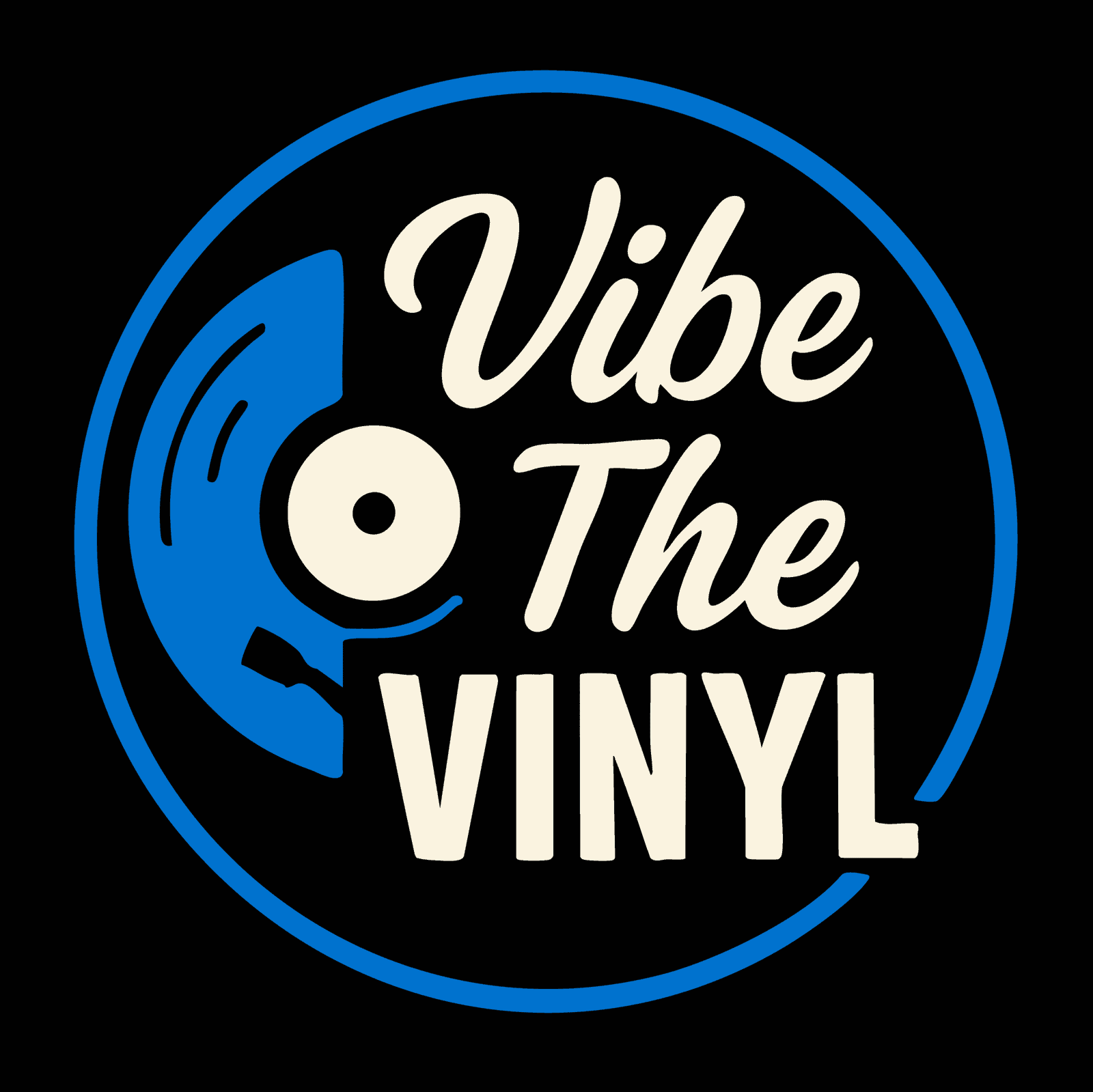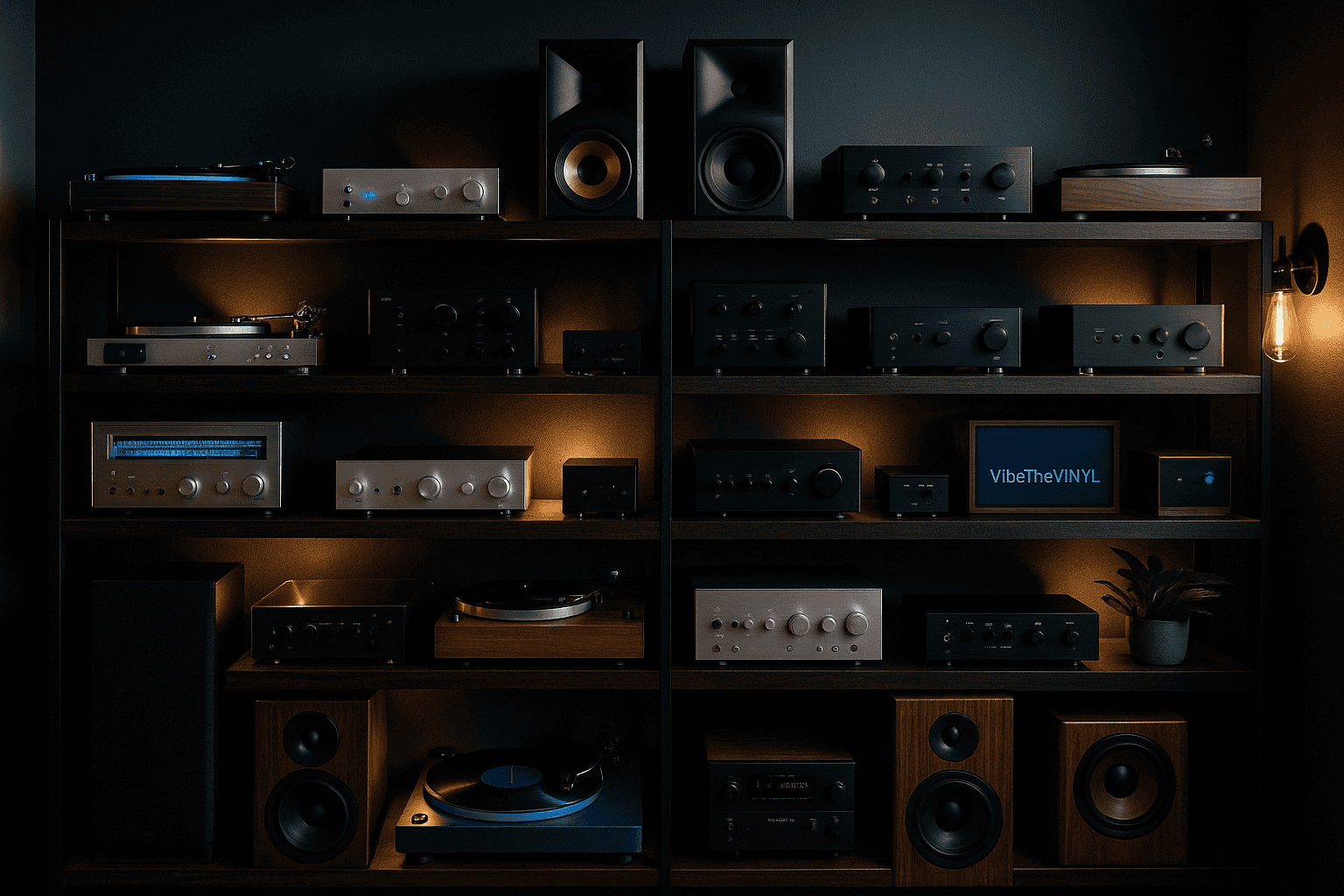Vinyl record Setup for Beginners: Good, Better, Best Systems
Heads up: This guide contains affiliate links. If you buy through them, we may earn a small commission — at no extra cost to you.
Now that you understand the gear and know how to set it up, it’s time to build a system that fits your space, your budget, and your taste. This guide groups the most reliable, beginner-friendly options into Good / Better / Best tiers, then shows clear upgrade paths for your vinyl record setup so you won’t paint yourself into a corner.

Missed the earlier parts? Start with
Part 1: Understanding the Signal Path
and
Part 2: Turntable Setup.
1. Choosing a Turntable
Every system starts here. Focus on speed stability, a solid tonearm, and a cartridge you can live with (and upgrade later). Avoid toy decks with ceramic cartridges.
Good
- Audio-Technica AT-LP60X — plug-and-play, fully automatic convenience.
- Fluance RT80 — belt-drive with a built-in phono stage and adjustable counterweight.
$199.00
| $249.99
|
Profile:
Fully automatic belt-drive deck that's easy to set up and friendly for first-time vinyl listeners. | Profile:
Plug-and-play belt-drive turntable with built-in phono stage. |
Features:
| Features:
|
Type:
Belt Drive, Automatic Start, Built in Phono, MM Cartridge | Type:
Belt Drive, Manual Operation, Built in Phono, MM Cartridge |
- Belt-drive
- Fully automatic
- Switchable PHONO/LINE output
- Replacement stylus available
- Belt drive
- Built-in phono preamp
- Adjustable counterweight
- Static-balanced tonearm
Better
- AT-LP120XUSB — direct-drive stability, easy to upgrade.
- Pro-Ject Debut Carbon EVO — refined belt-drive with a carbon tonearm.
- Fluance RT85 — acrylic platter and Ortofon 2M Blue onboard.
N/A
| $599.00
| $549.99
|
Profile:
Rugged direct-drive turntable with pitch control and USB output for ripping records. | Profile:
Refined table with carbon tonearm and quality cartridge for a serious step up in sound. | Profile:
Upgraded belt-drive with acrylic platter and Ortofon 2M Blue. |
Features:
| Features:
| Features:
|
Type:
Direct Drive, Manual, MM, Buit in Preamp | Type:
Belt Drive, Manual, MM Cartridge, No built in Phono | Type:
Belt Drive, Manual Operation, No Built in Phono |
- Direct-drive
- Manual operation
- USB output
- Pitch control
- Belt-drive
- Manual operation
- Carbon-fiber tonearm
- Height-adjustable feet
- Acrylic platter
- Ortofon 2M Blue
- Solid MDF plinth
- Isolated motor
Best
- Audio-Technica AT-LP7 -Audiophile direct-drive turntable from a trusted brand.
- Technics SL-100C -Entry audiophile direct-drive alternative to SL-1500C
- J-shaped tonearm with VTA adjustment
- AT-VM520EB cartridge included
- Electronic speed control
- Solid MDF chassis
- Coreless direct drive motor
- S-shaped tonearm
- Auto-lift at record end
- Audio-Technica VM95C cartridge
2. Picking a Phono Stage
Phono preamps bring your turntable’s tiny cartridge signal up to line level and apply RIAA EQ. If your deck has a built-in phono stage, you can start there and upgrade later.
Good
- Built-in preamps on turntable models like AT-LP60X, Fluance RT80.
- ART DJPREII — budget external with adjustable gain and capacitance.
- MM-only support
- Switchable rumble filter
- Gain trim knob
- LED signal/clip indicator
Better
- Rega Fono Mini A2D — clean MM stage with USB for digitizing.
- Schiit Mani 2 — flexible gain/loading in a tiny chassis.
- MM & MC compatible
- Gain options: 33/42/48/60 dB
- Subsonic filter
- Compact design
- Low noise floor
Best
- Cambridge Audio Alva Solo — low-noise MM stage with subsonic filter.
- Cambridge Audio Alva Duo if you need MC support.
- Low-noise design
- Subsonic filter
- RIAA precision
- Compact chassis
3. Amplification Options
Choose between powered speakers (amp inside the speakers) or a separate receiver/integrated amp driving passive speakers. Powered is simple; separates are more flexible long-term.
Good
- Edifier R1700BT (powered) — compact, Bluetooth, simplifies set up with fewer components.
- Yamaha R-S202BL (receiver) — big value power and Bluetooth.
- Integrated amp
- Analog inputs
- Built-in phono
- Sub out
- 60W per channel @ 8Ω
Better
- Sony STR-DH190 — built-in MM phono stage and Bluetooth.
- Onkyo TX-8220 — Good hub for mixed TV + vinyl rooms
- Phono input (MM)
- ~100W x2 (8Ω)
- Bluetooth
- Speaker A/B
- Stereo receiver
- Multiple inputs
- Bluetooth
- Phono input
- 45W per channel @ 8Ω
Best
- Marantz PM6007 — musical integrated with MM phono and onboard DAC.
- Cambridge Audio CXA81 MkII — more power and a refined DAC for tougher speaker loads.
- 45W x2 (8Ω)
- MM phono input
- Optical/Coax DAC
- Tone controls
- 80W per channel @ 8Ω
- ESS Sabre DAC
- XLR balanced input
- Multiple digital inputs
- Subwoofer out
4. Speaker Choices
Room size and placement matter as much as the badge on the box. Bookshelf speakers are the most flexible starting point. If you sit close or have a small room, favor neutral voicing over raw output.
Good
- Sony SSCS5 — budget 3-way with surprising detail.
- Edifier R1280DBs — Powered, Bluetooth, simplifies set up with fewer components.
- 3-way design
- 5.25" woofer
- 1" tweeter + super tweeter
- 6Ω nominal
- Powered speakers
- Optical/Coax inputs
- Bluetooth
- Remote
- 21W RMS per channel
Better
- Fluance Signature Series Bookshelf — lively and easy to drive.
- KEF Q150 — balanced and forgiving, great imaging.
- Two-way design
- ~5" woofer
- 1" tweeter
- Rear port
- 8Ω nominal
- 5.25" Uni-Q concentric driver
- Rear-ported design
- 86 dB sensitivity
- 8Ω nominal impedance
- Smooth, balanced sound.
Best
- Klipsch RP-600M II — dynamic, efficient, great with modest power.
- ELAC Uni-Fi 2.0 UB52 — tight, neutral, rewards good amplification.
- 5.25" Uni-Q concentric driver
- Rear-ported design
- 86 dB sensitivity
- 8Ω nominal impedance
- Smooth, balanced sound.
- 3-way concentric design
- 5.25" woofer
- 6Ω nominal
- Precise imaging
5. Starter System Recommendations
Here are complete rigs that play nicely together. You can buy them all at once or build in stages. Each choice leaves room to upgrade without replacing everything.
Budget (~$400)
- Fluance RT80 → built-in phono → Edifier R1280DBs (powered speakers).
Why it works: a simple record setup with very few boxes, clean, uncomplicated, and Bluetooth for casual streaming. As a side note, you really can’t go wrong with either turntable in our “Good” category. The Audio-Technica AT-LP60X is also a solid choice for beginners. My personal feeling, is that if your thoughts are to learn and head down the path of upgrades, the Fluance is a great starting point.
Mid (~$800)
Why it works: a record setup with neutral speakers, quiet phono stage, and enough power for small to mid rooms.
Step-Up (~$1,200+)
Why it works: a record setup with a strong cartridge, musical amp with phono and DAC, and dynamic speakers that don’t need a monster amp.
Aspirational (~$1,500–2,000+)
Why it works: a vinyl record setup that is stable table, flexible phono stage, serious integrated, and speakers that scale with upgrades.
6. Upgrade Paths
You don’t need to swap everything to hear a real improvement. Work the chain one piece at a time.
- Cartridge upgrade — often the best cost-to-impact ratio.
- Add an external phono stage — cleaner gain, more detail.
- Move from powered to passive speakers — more headroom and flexibility.
- Improve support & isolation — cut feedback, stabilize playback.
- Better sleeves and cleaning — less noise, longer stylus life.
Vinyl record setup Recap
Pick a table you trust, match amplification to your room and speakers, and leave yourself an upgrade path. Start simple, keep noise low, and make small changes over time. That’s how you build a vinyl system you love without wasting money.
Back to Part 1: The Signal Path ·
Back to Part 2: Turntable Setup
























